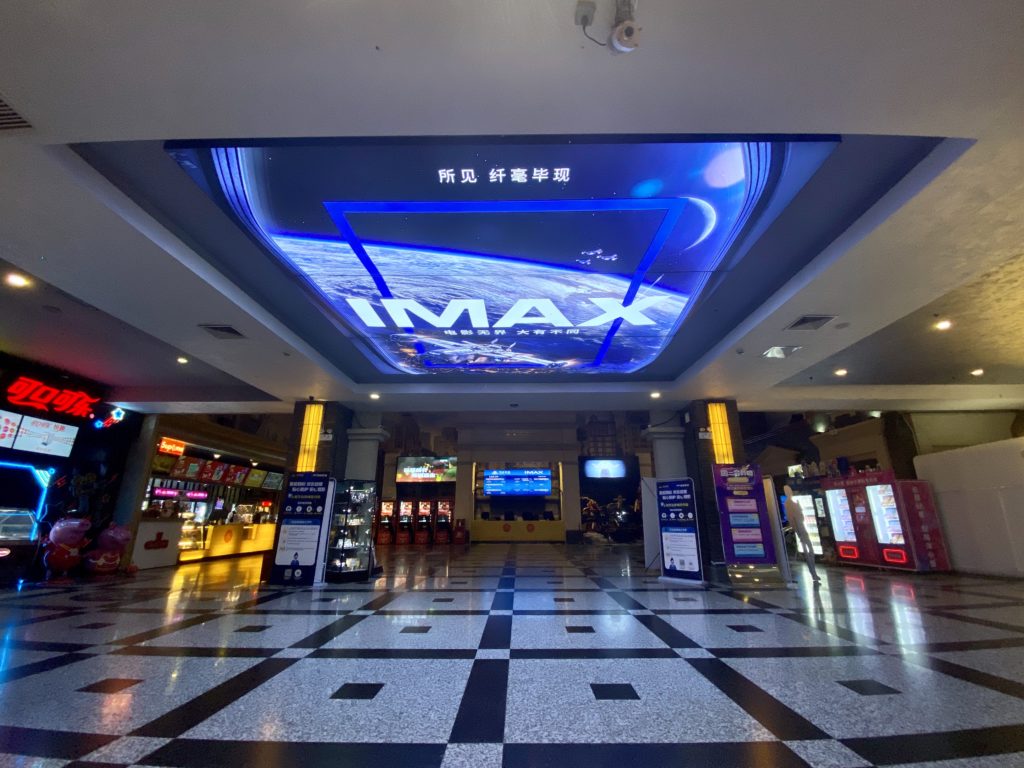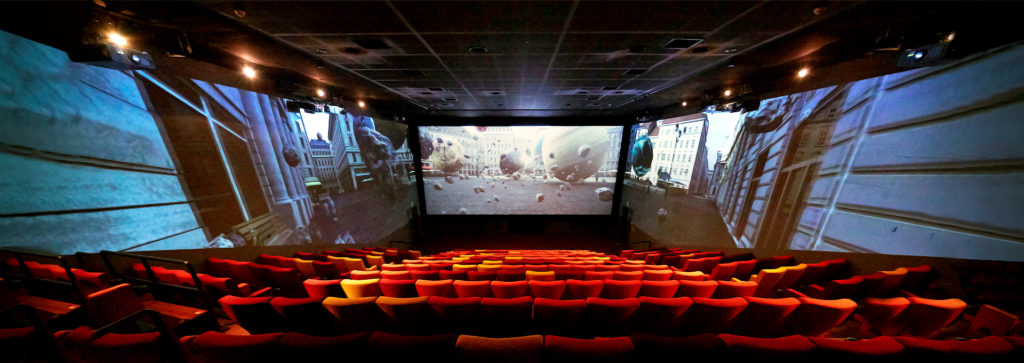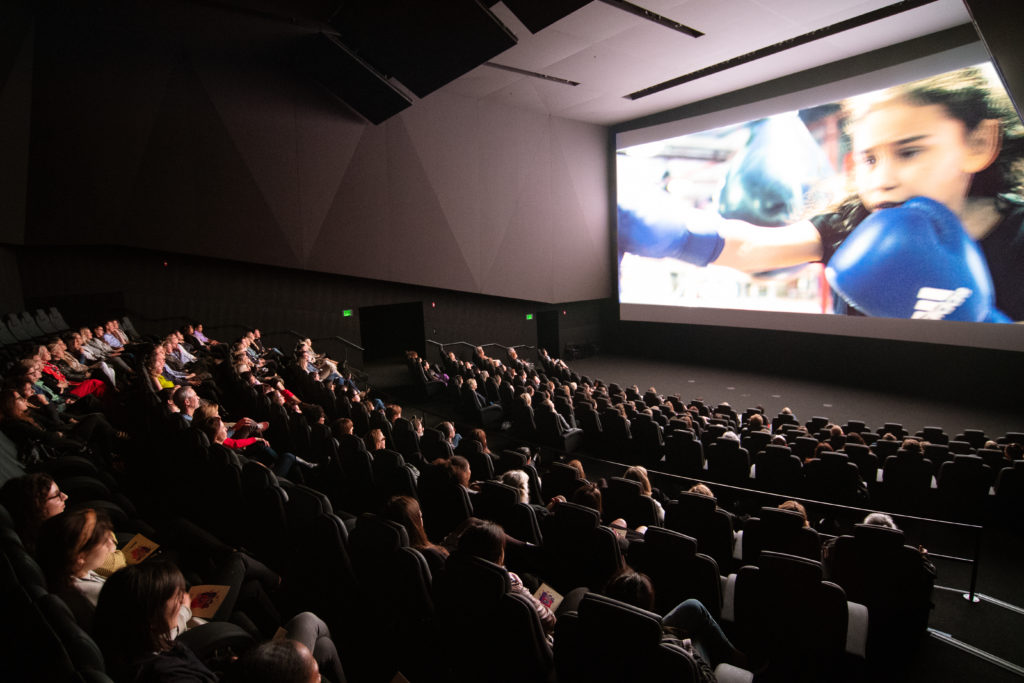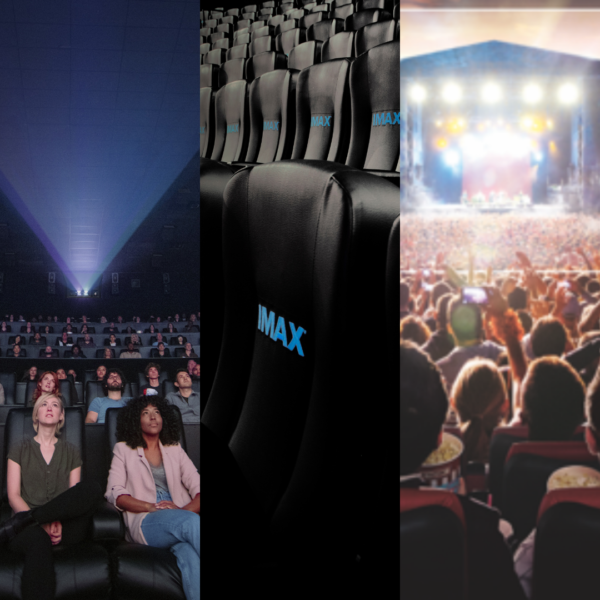The road to theatrical recovery in North America has been slower than anyone could have anticipated as we approach the one-year anniversary of the Covid-19 shutdown. As we closed out 2020 with a gradual vaccine rollout and studios continuing to delay their tentpole films, however, one argument has consistently emerged as a cause for cautious optimism. Look, argued NATO president and CEO John Fithian in December, at the state of affairs in China and Japan, where box office has become revitalized following the taming of the pandemic. “Some of these movies in China and a couple of them in Japan … they’re doing amazing business,” said Fithian in an exclusive interview with the Boxoffice Podcast. “That’s very good news, because that means people want to come back to the cinemas, and they love seeing movies on the big screen.”
There are big screens, of course, and there are big screens—premium large-format (PLF) offerings that provide a more spectacular, immersive experience than what audiences can get at home. With global recovery in the works—albeit a stuttering one, particularly in North America and Europe—Boxoffice Proreached out to PLF providers to get a sense of what role PLF could play in the industry’s bouncing back from Covid, both domestically and overseas.
“As markets recover, Imax fans—often the most frequent and passionate moviegoers—have been among the first to come back to theaters,” says Craig Dehmel, executive vice president, head of global distribution, at Imax Entertainment and senior vice president at Imax Corp. In countries “where Covid is more under control and people feel safe to return to multiplexes”—like select markets in Asia and the Middle East—Imax is seeing “excellent numbers” for both local titles and the rare Hollywood release like Tenet.
In Tenet’s first weekend of international release, premium formats accounted for over a quarter of box office receipts in some markets, while Imax’s per-screen average for Tenet’s opening weekend—representing nearly 250 screens across 38 countries—was over $20,000. As of December 21, the film had earned $42 million on Imax screens. Tenet was followed by fellow Warner Bros. release Wonder Woman 1984, which by December 27 had earned $8.2 million on Imax screens worldwide, making up nearly a tenth of its overall gross.
With Hollywood tentpoles thin on the ground since March 2020, PLF providers have had to look to other programming categories to fill their screens and give moviegoers hungry for out-of-home entertainment a reason to hit up their local theater. For Imax, the solution has been local content, with films like The Eight Hundred and Jiang Ziya: Legend of Deification (China), Demon Slayer the Movie: Infinite Train (Japan), and Train to Busan sequel Peninsula (South Korea) drawing audiences to Imax screens across Asia in droves.

By far Imax’s biggest market in 2020 has been China, where a network of nearly 700 screens saw a gross box office (GBO) of nearly $80 million from July up to (but not including) the December release of Wonder Woman 1984. “Our success in China in 2020 has more to do with Chinese local titles” than Hollywood imports, explains Dehmel. In Japan—where between July and December Imax earned a GBO of over $30 million on 38 screens—the “key driver for our success” has been Toho/Aniplex’s Demon Slayer the Movie: Infinite Train, which in December surpassed 2001’s Spirited Away as Japan’s highest-grossing title of all time. Reflecting the earnings power of local titles in Japan, in November Imax inked a deal with Toho for a five-film distribution agreement.
ScreenX—Korea-based cinema technology company CJ 4DPLEX’s 270-degree panoramic screen offering—also found success in 2020 despite a lack of major Hollywood titles. “Box office for both of our premium formats, ScreenX and [motion seating technology] 4DX, have been increasingly steady as markets have begun to open up,” says CJ 4DPLEX CEO JongRyul Kim. Over the second half of 2020, “exhibitor partners have started to embrace more and more ScreenX (and 4DX) as a means of bringing moviegoers back to cinema, as the experience can’t be replicated at home or elsewhere.”
As with Imax, East Asia was ScreenX’s strongest territory in 2020, with China’s box office having “fully recovered to past annual averages, while Korea and Japan have had a steady inflow of audiences” in the final months of the year, says Kim.
With audiences eager to set foot in theaters—and big-budget Hollywood releases decidedly not, at least not yet—CJ 4DPLEX has had to be flexible in terms of programming, says Kim. In collaboration with parent company CJ CGV and sister company CJ ENM, “We recognized the skyrocketing demand for alternative content made specially for the big screen, and in particular ScreenX. With virtually all offline concerts canceled due to Covid, we found that fans find inherent value in reliving the exhilarating experience of a concert-type event in the cinema instead. So we’ve bolstered our efforts in creating an immersive and vibrant way of enjoying concerts through our ScreenX format. The feedback indicates that this fledgling segment of cinema shows great loyalty and box office potential as it provides a comfortable, safe, and communal environment for audiences to see their favorite stars.”

Thank You All: The Kim Ho Joong Movie, featuring a popular Korean opera star, was broadcast live to 40 ScreenX theaters in Korea before being filmed and rereleased three months later; Kim notes that 80 percent of the film’s audience market share came from ScreenX. Outside the concert space, ScreenX’s first-ever livestreams of Korea’s League of Legends tournament launched in May 2020. ScreenX’s three-screen format, explains Kim, allowed viewers to augment the real-time broadcast with data and other images that “intensified the game-viewing experience.” The company is also expanding its programming to include more documentaries and content from TV and YouTube moving forward.
With Covid cases not yet under control and a consistent movie slate still on the horizon, the North American market hasn’t yet fully entered its own recovery period—though when that day does come, says Dolby’s Doug Darrow, SVP, cinema business group, “We expect those returning to the movies in 2021 to desire elevated experiences such as a PLF. As we know, going to the movies is a fun, immersive experience, and people want the best when they go.” That belief is shored up by Dolby’s international experience, as 2020 was a growth year for the company’s premium Dolby Cinema offering. Says Darrow: “We’ve seen our presence grow overseas in the last year, particularly in Asia and the Middle East, which are bouncing back from the pandemic ahead of the rest of the world. We have new screens and exhibitor partners in several countries including China, Japan, Korea, Saudi Arabia, and the UAE—showing that people are truly demanding the best experience possible.”

Looking back at North America, Dehmel describes Imax’s experience in the domestic market as “muted”; as of December 21, only 40 percent of its North American network was open, and top screens in Los Angeles and New York had remained closed since March. Kim of CJ 4DPLEX, too, notes that “we are eager to have our U.S. business back,” while MediaMation CEO Howard Kiedaisch says that some “customers with capital available are investing now” in new installations so that they can more fully take advantage of “what will be an explosion of demand when consumers are able to get back out and enjoy what they all love—movies on the big screen.”
At theaters that have been able to open in the U.S. and Canada, PLF has played a role in getting moviegoers in to see such films as are available. According to Ryan Noonan, vice president of corporate communications at AMC Theatres, “A premium large-format experience is a huge advantage in the marketplace as it’s become a primary driver in getting guests to come to the movies right now.” AMC’s North American PLF presence includes 153 Dolby Cinema installations and 186 Imax screens.
It’s a sentiment echoed by Rob Lehman, COO at Santikos Entertainment, which boasts its own exhibitor-branded PLF (called AVX) in addition to one Imax screen. Starting in May, when Santikos locations began to reopen with classic titles, ticket prices for both PLF and regular auditoriums were reduced to $5. “This allowed our customers to experience classic movies like Jurassic Park and Raiders of the Lost Ark in our AVX auditoriums,” says Lehman, with the goal that’d they’d enjoy the experience and return once prices went back up (as they did with the release of Tenet) and new movies began coming out.
On Christmas Day, AVX auditoriums at Santikos’s Casa Blanca and Palladium locations boasted 92 and 93 percent occupancy, respectively. (With the caveat that occupancy rates for both locations were mandated at 50%.) As of January 10, Santikos’s Palladium location was the highest-grossing nationwide for films News of the World and Let Him Go, in part due to AVX screenings there.
B&B Theatres, too, finds that audiences have responded to the PLF experience during the pandemic, with EVP Brock Bagby arguing that “customers have a sense of safety in these giant rooms with tall ceilings. You feel more spread out than being in a smaller, more intimate setting.” Among its PLF offerings, B&B boasts Imax, MediaMation’s MX4D immersive seating technology, ScreenX, and its own branded PLF experience, called Grand Screens—though as of press time, only 23 Grand Screens and one Imax screen were open. Says Bagby: “During this time, we only wish we had more!”



Share this post